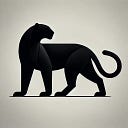Member-only story
The Dance of the Dragons
In Fire and Blood, the fictional history of the Targaryen Dynasty (and the inspiration for the Game of Thrones prequel, House of Dragons) there is a passage in which Archmaester Gyldayn meditates on the ‘inappropriate’ name given to the Targaryen civil war; ‘The Dance of the Dragons’:
The Dance of the Dragons is the flowery name bestowed upon the savage internecine struggle for the Iron Throne of Westeros fought between two rival branches of House Targaryen during the years 129 to 131 AC. To characterize the dark, turbulent, bloody doings of this period as a “dance” strikes us as grotesquely inappropriate. No doubt the phrase originated with some singer. “The Dying of the Dragons” would be altogether more fitting, but tradition, time, and Grand Maester Munkun have burned the more poetic usage into the pages of history, so we must dance along with the rest
Gyldayn objects to the word ‘dance’ as an inappropriate word for war, but there are many similarities between the two. Both are performed with percussion instruments (i.e. field drummers), both combine choreography and improvisation, and both involve an exchange of power.
This last point was inspired by a comment made by the neuroscientist Andrew Huberman in a clip about the work of Dr. Erich Jarvis. Jarvis, a former member of the Alvin Ailey Dance School, currently studies the neurobiology of vocal…
